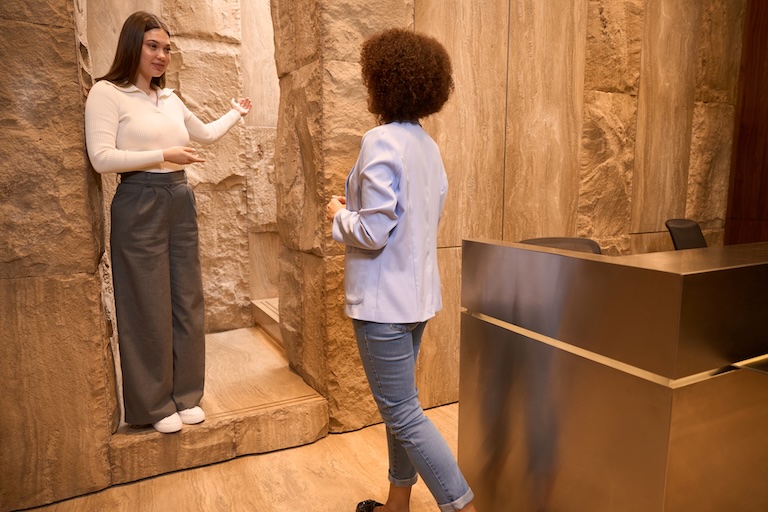 August 14, 2025
August 14, 2025
Launch on visitors’ phones, in their language, without breaking the budget
If you’re a museum owner weighing the value of a museum audio guide, here’s the good news: modern, web-based guides are affordable to launch, simple to run, and can pay for themselves. In this guide, we’ll show how a museum audio guide improves access, engagement, and revenue—without extra staff or costly hardware.
What is a museum audio guide (in 2025)?
A museum audio guide is a mobile web experience visitors open via QR code or short link. They listen on their own phones, choose their language, follow short trails, and access transcripts for accessibility. No handset queues, no sanitising headsets, no app-store updates.
Why museum owners choose a museum audio guide
- More inclusive: audio + transcripts help visitors who prefer listening or need larger text.
- Multilingual at low cost: add languages as you learn where demand is.
- Better flow: self-paced listening spreads crowds away from pinch-points.
- Measurable impact: privacy-respecting analytics show which stops work.
- Gentle revenue prompts: invite a tap-to-donate or join at natural moments.
Affordability: the cost stack (and how to keep it low)
1) Content
- Scripts: 150–220 words per stop (≈60–90 seconds). Write for the ear, not the label.
- Recording: start with a warm volunteer voice; upgrade to light professional later.
2) Platform
- Web-based museum audio guide with hosting, analytics, and offline playback. Start on a small plan and scale.
3) Signage
- High-contrast QR codes at entrance, map, star objects; URL on tickets and website.
4) Maintenance
- Quarterly script tweaks; add new stops for exhibitions; check analytics monthly.
BYOD web guide vs legacy handsets
- No devices to buy or clean
- No charging racks or repairs
- Instant content fixes (no contractor call-outs)
- Offline-friendly for basements and thick walls
- Launch in days with QR codes and a clear start page
Step-by-step: launch your museum audio guide in 10 days
- Pick 12 highlight objects (mix star items + hidden gems).
- Draft scripts; read aloud; trim to 60–90 seconds.
- Record on a quiet smartphone + lapel mic or volunteer studio.
- Upload audio, titles, and images to your web guide.
- Create two short trails (e.g., “15-minute Highlights”, “Family Trail”).
- Prepare QR signage (entrance, map, star objects, website).
- Add transcripts and clear “How to listen” instructions.
- Insert one gentle donate prompt near the end of the trail.
- Soft-launch to members/volunteers; fix rough edges.
- Review analytics after two weeks; improve the two weakest stops.
Accessibility & multilingual best practice
- Provide transcripts and alt text.
- Keep sentences short; avoid jargon; use a friendly tone.
- Offer playback speed controls and large tap targets.
- Add 1–2 priority languages first; expand with demand.



